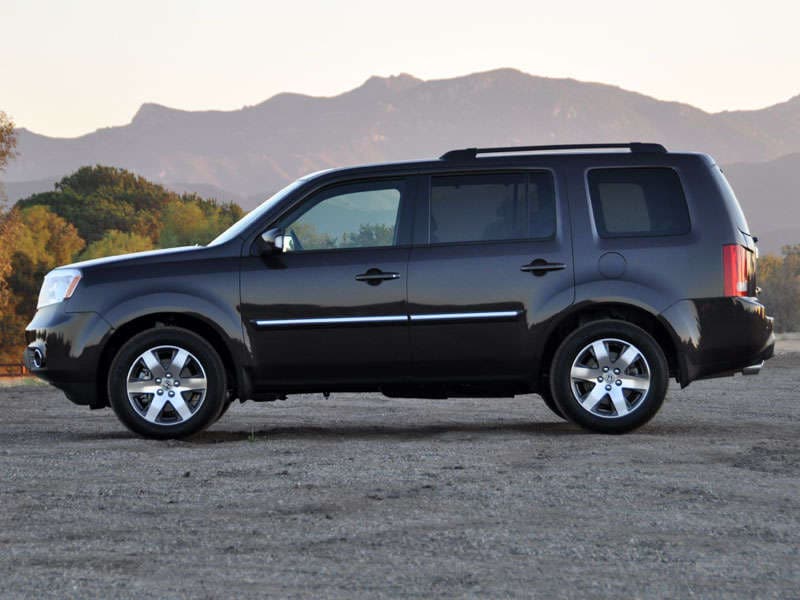Recent Articles
Popular Makes
Body Types
2013 Honda Pilot Road Test and Review
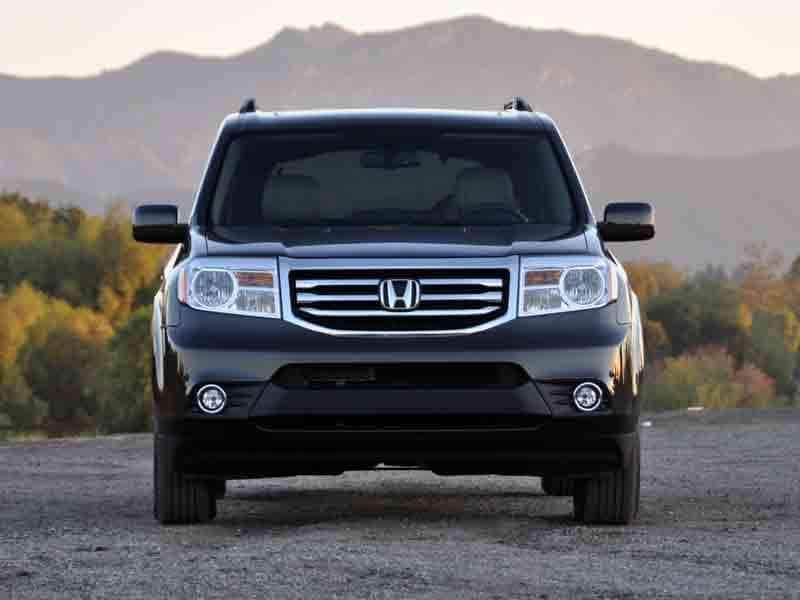
People who frequently find that they need a minivan but want an SUV ought to carefully consider the 2013 Honda Pilot. I say this not because I’m regurgitating a Honda press release touting the Pilot’s 8-passenger seating capacity and generous cargo volume. Rather, I say this because I just put 1,500 miles on a Pilot in the space of one week, ferrying my six-member family to Las Vegas in searing 120-degree heat, to Santa Barbara for a beach day and 4th of July fireworks, and to Disneyland to battle summertime tourist crowds.
With the single exception of mediocre fuel economy, the Pilot performed flawlessly, and I would recommend one without hesitation. Just plan to make frequent stops at gas stations.
2013 Honda Pilot Road Test and Review: Models and Prices
Honda sells the 2013 Pilot in LX, EX, EX-L, and Touring trim levels. Prices range from $30,350 for a Pilot LX with front-wheel drive to $42,100 for a Pilot Touring with four-wheel drive, including the $830 destination charge.
When I told my wife our Pilot test vehicle cost $42,100, she reacted in a negative fashion. The thing is, our fully loaded Honda’s price tag is on par with a Chevy Traverse LTZ, a Dodge Durango Citadel, a Ford Explorer Limited, a Nissan Pathfinder Platinum, and the Toyota Highlander Limited. In other words, the Pilot Touring is competitively priced.
The Touring models are equipped with everything Honda offers for this SUV, including a navigation system, a multi-angle reversing camera, a 650-watt premium sound system with 10 speakers and a 15-gig music hard-drive with Song by Voice track retrieval, and a rear-seat entertainment system with video game input jacks and a 115-volt power outlet. The Pilot Touring is also equipped with a power sunroof, a power liftgate, leather upholstery, a 10-way power adjustable driver’s seat, heated front seats, heated side mirrors, and more.
My Honda Pilot Touring 4WD test vehicle was painted Dark Amber Metallic. Inexplicably, brown paint is in vogue, but I suspect it will flame out in much the same way green did back in the 1990s. Of the seven colors offered for the Pilot, Dark Amber Metallic is my least favorite.
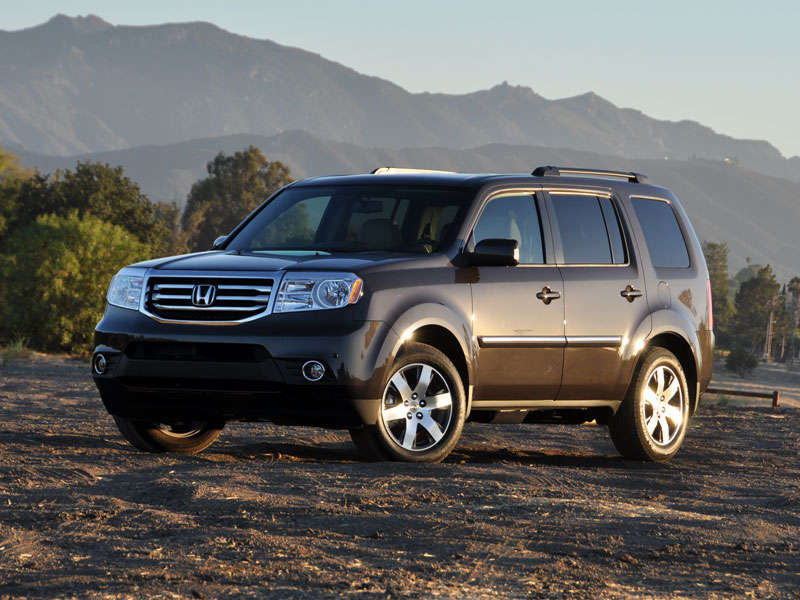
2013 Honda Pilot Road Test and Review: Design
- New Obsidian Blue Metallic paint color
Paint color aside, the Honda Pilot isn’t exactly a looker, even when painted in its appealing new Obsidian Blue Metallic color. Boxy and equipped with wide-eyed headlights that give it a surprised look, nobody will call a Pilot beautiful or elegant. But then, neither are most of the other tools in your garage. Still, they’re damn useful, aren’t they?
Any version of the Pilot incorporates a utilitarian interior design principle. Everywhere you or your passengers look there are storage trays, cubbies, and bins, as well as a variety of round cup holders and square juice box holders. With even a quick glance at the Pilot’s interior, there should be no mistaking this vehicle’s mission.
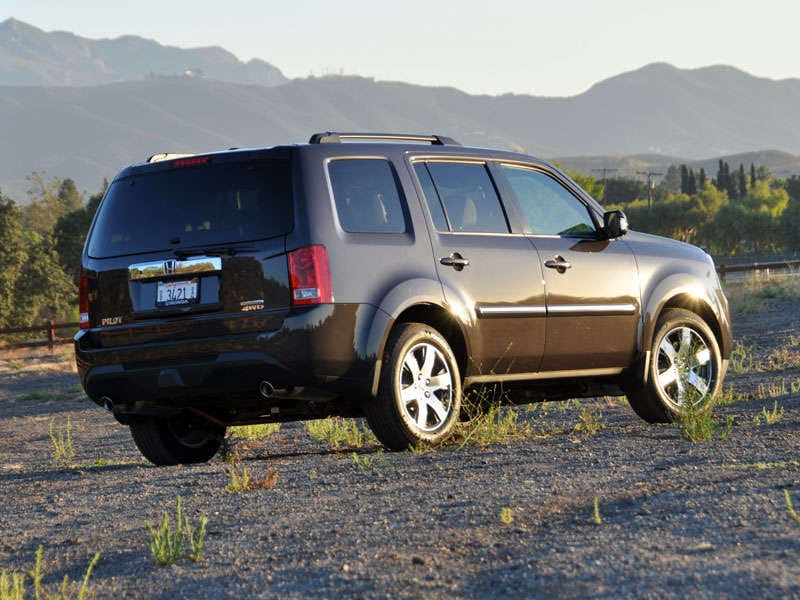
2013 Honda Pilot Road Test and Review: Comfort and Cargo
- Standard triple-zone automatic climate control
Seeking a vehicle that is comfortable and commodious? The Pilot is a great solution. This is a genuine 8-passenger SUV, and is more accommodating and flexible than many of its direct competitors, as well as indirect competition in the form of traditional full-size SUVs and minivans.
Starting up front, the Pilot’s 10-way power driver’s seat and tilt/telescopic steering wheel make it easy to find a comfortable driving position, while a softly padded center console top adds to long-distance comfort levels. All that’s missing here is equally soft upper door panel trim and front seat ventilation for hot summer days.
The front passenger’s seat lacks height adjustment, but doesn’t require it. Occupants sit high off of the floor and enjoy excellent thigh support. Soft upper door panel trim and glove box door padding sure would be nice, though.
A Pilot can seat three adults in its 60/40-split second-row seat, or can accommodate three child safety seats abreast, either of which is a rarity in the segment. A family that includes three children should have no trouble with a Pilot, and will be able to keep the third-row seat folded for maximum cargo carrying capability.
By the way, the Pilot Touring models offer integrated second-row sunshades that can be pulled up to cover the glass on sunny days. As a parent with experience toting babies in reverse-facing child safety seats, these are terrific. Too bad Honda reserves them only for the most expensive version of the Pilot.
Since I have four children ranging in age from 2 to 16, I needed to use all three rows of the Pilot’s seats, but Honda makes this SUV work brilliantly for larger families, too. With the little kids’ child safety seats mounted flush together in the second-row seat, the tilt-and-slide section of the second-row had enough clearance to make accessing the third-row seat relatively easy.
For the Vegas trip, my lanky 16-year-old daughter rode in the way back, on the “40” side of the 60/40-split folding third-row bench. We adjusted the second-row seat to help increase leg room for her, and aside from a sore posterior after a 5-hour stint, she emerged just as passively disengaged from the rest of us as she was when she climbed aboard. The 120-degree heat in the California desert didn’t faze her, either, thanks in part to the Pilot’s standard triple-zone climate control system and third-row air vents.
Had we been forced to use the entire third-row seat, the Pilot would have provided 18 cu.-ft. of vertically stacked cargo space. Realistically, the volume is more like 12 cu.-ft. because without a rigid partition, using all of the available room wouldn’t be safe to occupants. Honda does, however, offer different sized rooftop cargo boxes for the Pilot, as well as side steps handy for loading such a contraption, so big families can easily take trips in this Honda.
We were able to fold the “60” side of the third-row seat down, though, which made it easy to pack the Pilot for a quick trip to Sin City. In case you’re wondering, a Pilot accommodates 47.7 cu.-ft. of space behind the second-row seat, and 87 cu.-ft. of cargo behind the front seats. Honda also provides rear window glass that opens separately from the liftgate, helping to make it easier to carry long items, to maximize load space, or to access items at the top of a stack of cargo.
There’s no shortage of interior storage spots, either. From triple-tiered bins in the front door panels and a wide tray embedded into the dashboard to various cubbies, trays, bins, and cup holders throughout the cabin, the Pilot is clearly made to carry a family and all of its stuff.
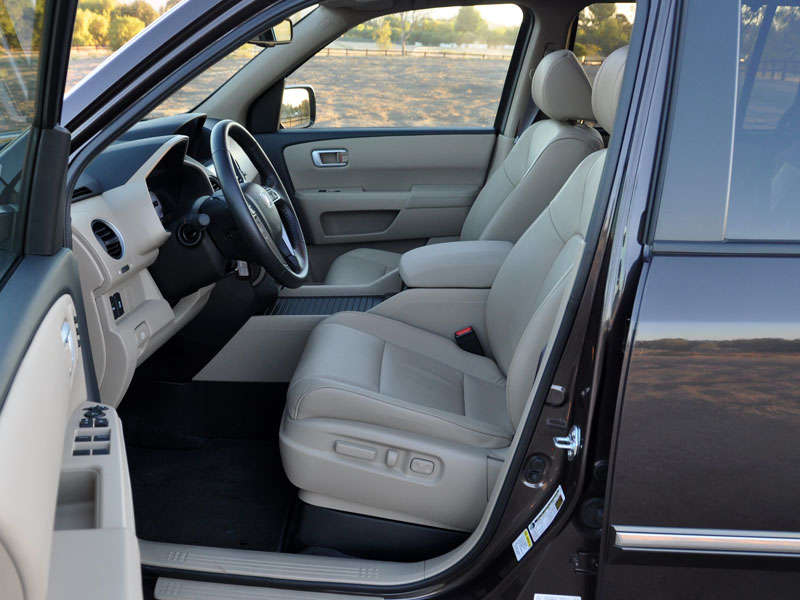
2013 Honda Pilot Road Test and Review: Features and Controls
- Standard Bluetooth hands-free calling
- Standard Bluetooth music streaming
- Standard USB port
- Standard 8-inch information display screen
Ever since the current version of the Pilot debuted for the 2009 model year, Honda has been striving to reduce the number of knobs and buttons located on the center control panel, and to improve their location and grouping in order to enhance usage. For the most part, the automaker has succeeded.
At the top of the dashboard, the infotainment display screen sits behind a plastic cover. It is not a touchscreen system. Rather, voice commands and a large control knob flanked by key menu buttons are used to operate the system, and in this way, Honda’s approach is similar to Audi and BMW. The control knob and hard keys are placed at the bottom of the center stack rather than at the top where they would be easier to reference.
Stereo controls sit high on the dashboard, with the DVD player for the rear seat entertainment system directly underneath. The climate controls are in the middle of the dashboard, separated from the display screen’s controls by a cubby bin.
Whether or not owners find this arrangement easy to use is debatable. What I will say is that after putting 1,500 miles on the Pilot, I didn’t have any trouble using them. Instead, the most irritating thing about the Pilot’s control layout was the gear selector, jutting forth from the left side of the center control panel and, when placed in Drive, sitting directly in the path of my hand when reaching for the stereo and climate controls. On several occasions, I accidently knocked the SUV into Neutral while trying to adjust volume or temperature.
Certain members of some families will be overjoyed to discover that Pilots with the rear-seat entertainment system are equipped with a 115-volt power outlet and video game input jacks. My gaggle of girls didn’t use this feature, preferring instead to power iPhones and watch Disney princess movies while aboard the Honda.
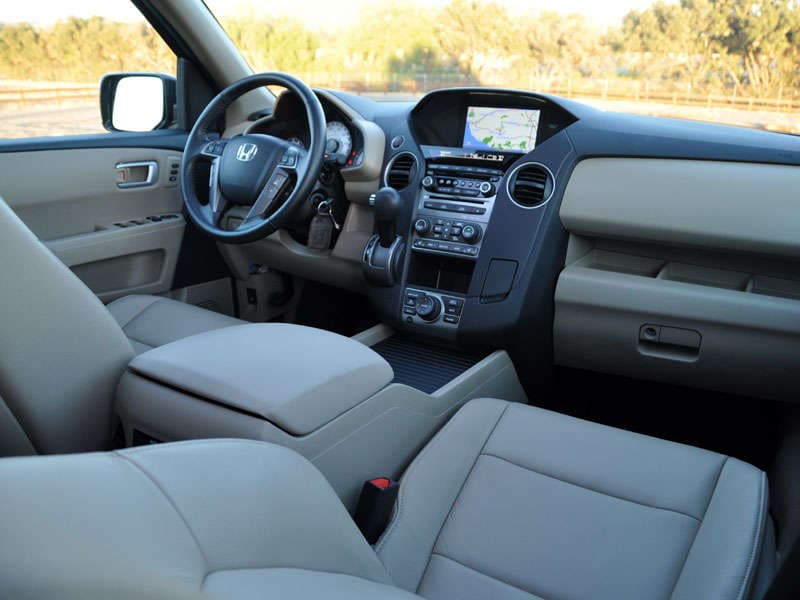
2013 Honda Pilot Road Test and Review: Safety and Ratings
- Standard reversing camera
One area where Honda can improve the Pilot is with regard to safety technology. If you’re someone interested in features like a blind spot information system, a lane departure warning system, a forward collision warning system, a rear cross-traffic alert system, or adaptive headlights that swivel to help see around corners and automatically dim in the presence of other traffic, you’re going to need to shop elsewhere. The most exotic safety equipment on this SUV is a standard reversing camera and optional dealer-installed rear parking assist sensors.
Though unavailable with the latest safety technologies, the 2013 Pilot is nevertheless a safe SUV, earning 4-star and 5-star ratings in each assessment conducted by the National Highway Traffic Safety Administration (NHTSA) as well as a “Top Safety Pick” rating from the Insurance Institute for Highway Safety (IIHS).
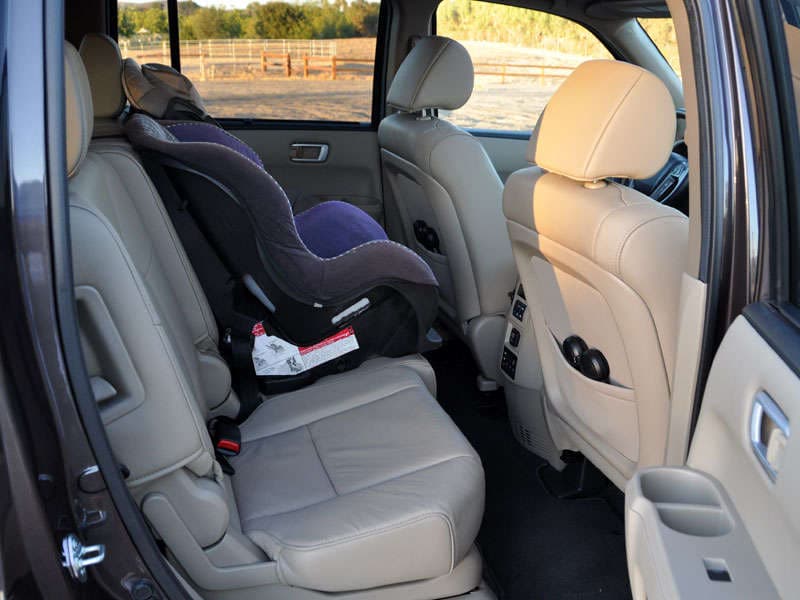
2013 Honda Pilot Road Test and Review: Engines and Fuel Economy
- No changes for 2013
Honda equips the Pilot with a 3.5-liter V-6 engine, and adds Variable Cylinder Management (VCM) technology designed to make the SUV more fuel-efficient. Under certain driving conditions, such as when cruising on a level highway or when descending a hill, the VCM shuts off half of the engine’s cylinders in order to help conserve gas.
While VCM certainly helps to improve fuel economy, it’s hard to call a Pilot fuel-efficient unless you compare it to a traditional 8-passenger SUV like a Chevy Tahoe or Ford Expedition. Then, it appears to be a gas mileage rock star.
According to the EPA, a Honda Pilot with 4-wheel drive is rated to get 17 mpg in the city, 24 mpg on the highway, and 20 mpg in combined driving. My test sample averaged 19.1 mpg, and that included a ton of highway traveling. However, keep in mind that most of the time I carried a full load of passengers.
The trade-off between a traditional 8-passenger SUV and the Pilot is towing capacity. The Pilot’s V-6 engine generates 250 horsepower at 5,700 rpm and 253 lb.-ft. of torque at 4,800 rpm, and weighs 4,299 pounds at a minimum before adding equipment, 4WD, passengers, and cargo. Still, the Honda bests many other crossover suvs by offering 4,500 pounds of trailer towing capacity.
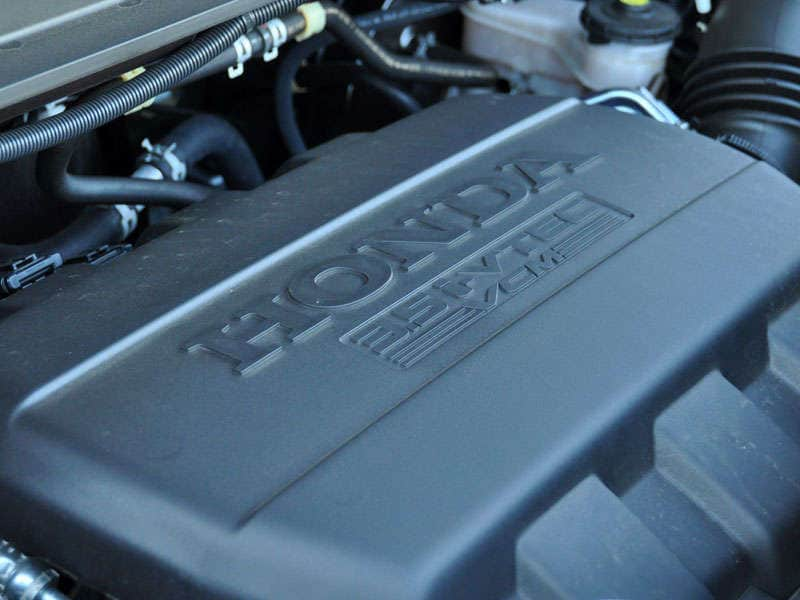
2013 Honda Pilot Road Test and Review: Driving Impressions
Like most Hondas, the Pilot is a more athletic vehicle than expected, especially given its weight, height and physical dimensions. The ride quality is connected and controlled, yet not so firm as to unsettle occupants. Steering is light in terms of effort but accurate in terms of response, no matter the vehicle’s speed. Dive around an exit ramp, and the Pilot impresses with a flat cornering attitude and a brake pedal that feels terrific underfoot and proves easy to modulate as the SUV comes to a stop.
This athleticism directly translates into a fun-to-drive feel, but competent handling pays dividends in unexpected ways, too. For example, on Interstate 15 heading to Las Vegas, a semi-truck wandered into our lane just as I passed the truck’s cab, and I needed to take rapid, evasive action to avoid a collision. The top-heavy Pilot, with six people aboard, swayed a bit as a result of my speedy lane change, but did not threaten a loss of control.
This experience is characteristic of the Pilot’s impressive handling chops. Loaded with passengers and cargo, this SUV feels only marginally less responsive and nimble than it does when only the driver is aboard. In fact, the biggest change in driving dynamics between one occupant and several occupants pertains to acceleration, with the Pilot feeling substantially slower the more it is asked to carry.
Though the Pilot never feels overpowered, rarely does it feel outright underpowered. Geared to take best advantage of the modestly endowed engine, the 6-speed automatic transmission does a great job of keeping the V-6 in the thick of its powerband when the driver needs it to be, while at the same time actively working to conserve fuel when conditions are right.
During my time with the Pilot, I primarily traveled freeways, and rarely alone. This Honda effortlessly cruises at 80 mph, climbs a grade with ease, and when the SUV’s exterior temperature display showed 120 degrees in Baker, California, occupants in all three rows of seats kept their cool. Traffic jams are no problem, either, as the Pilot's passengers are comfortable and can access a variety of media to entertain their brains.
I did tackle a few twisty roads in the Pilot, and it proved itself to be both predictable and sure-footed. Obviously, you're not going to drive like Sebastian Vettel in a contraption like this, but there's also no excuse for holding up traffic. The one thing I didn't do in the Pilot was go much further off-road than a dirt parking lot. But then, most Pilot owners don't, either.
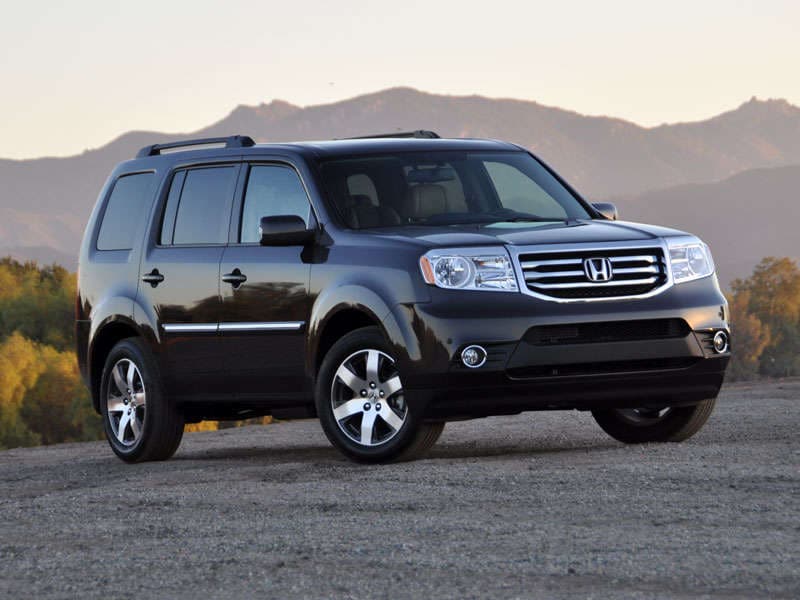
2013 Honda Pilot Road Test and Review: FInal Thoughts
Despite its advancing age, the Honda Pilot is an incredibly useful tool for a modern family. Think of it as a Leatherman on wheels, a vehicle that can do almost anything at anytime, and with a smile on its wide-eyed face. It might not be the best-looking SUV on the road, but it glows with an undeniable inner beauty that makes it indispensable. There are a few flaws, of course, but with such a strong foundation upon which to improve, making the next-generation Pilot perfect seems like an easy job to me.
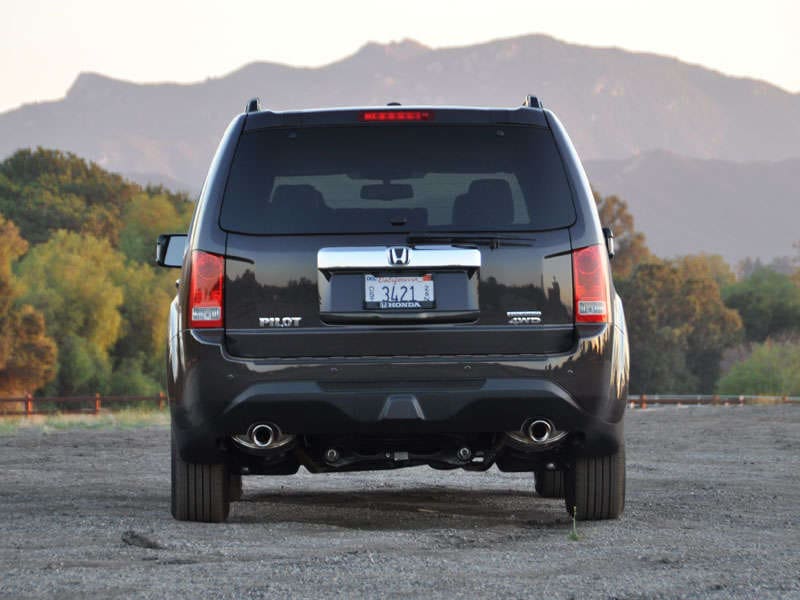
2013 Honda Pilot Road Test and Review: Pros and Cons
- Excellent passenger and cargo flexibility
- Plenty of useful storage solutions
- Long-distance comfort
- Impressive handling
- Favorable crash-test ratings
- Unimpressive fuel economy
- Lacks emergency services technology
- Unavailable with modern safety upgrades
Honda supplied the vehicle for this review
2013 Honda Pilot Touring photos by Christian Wardlaw
